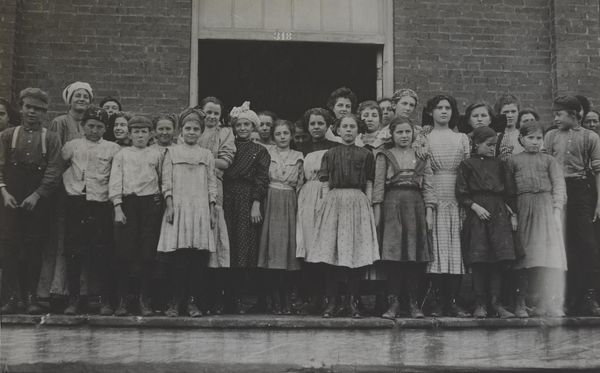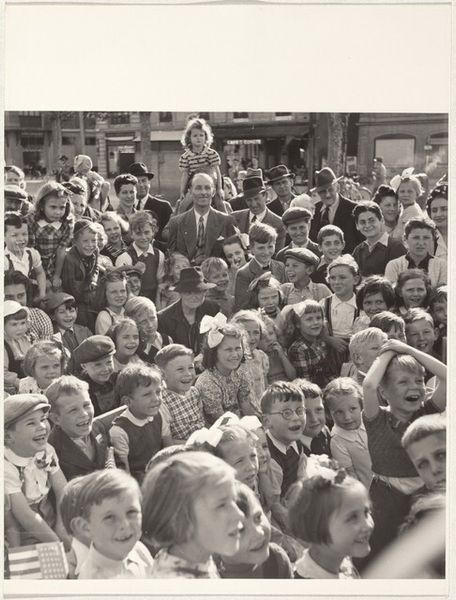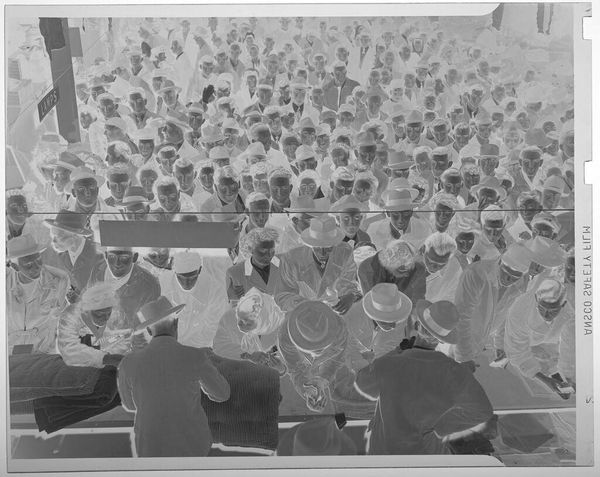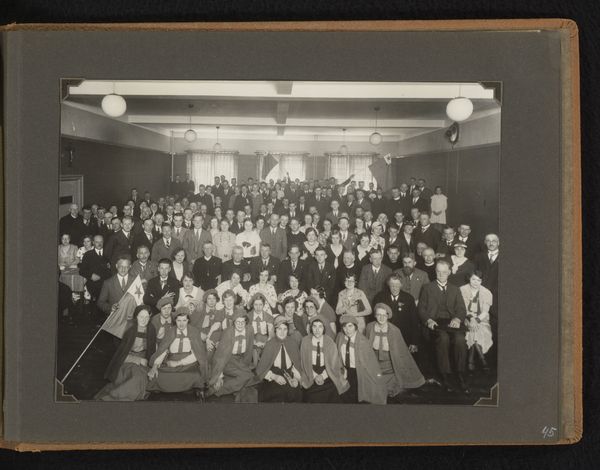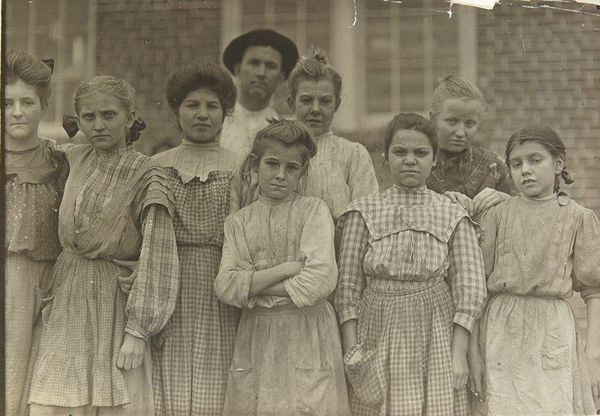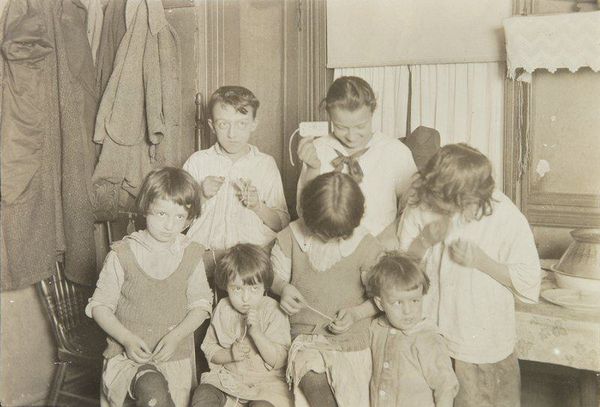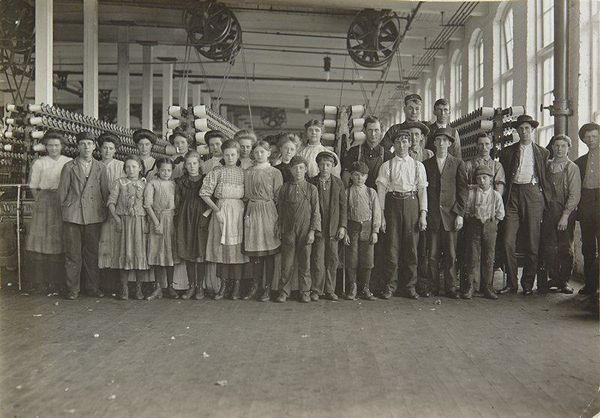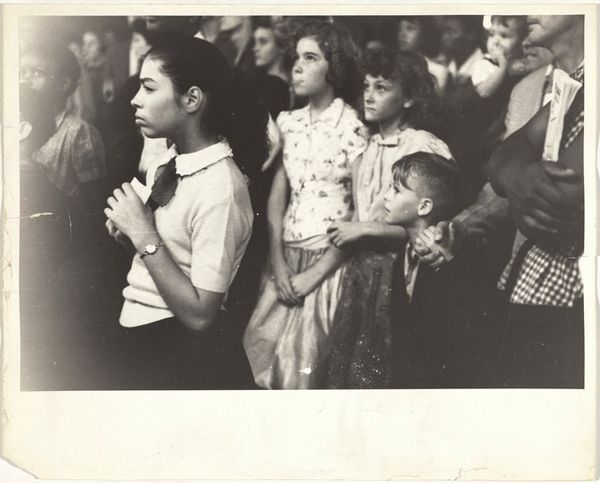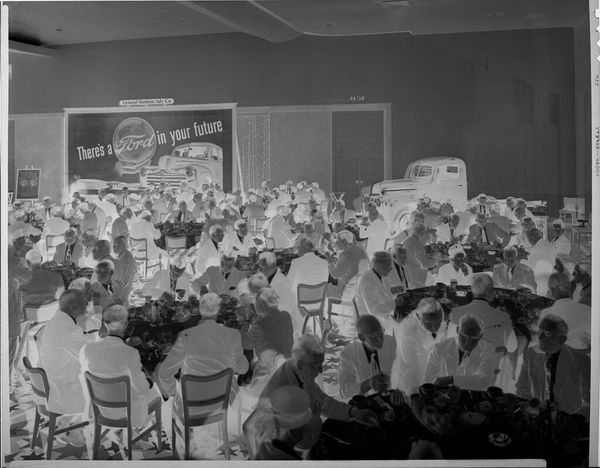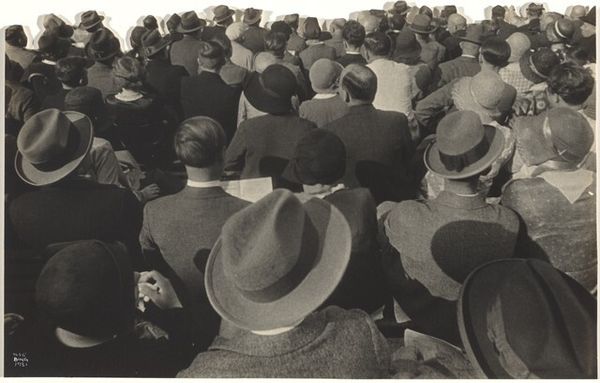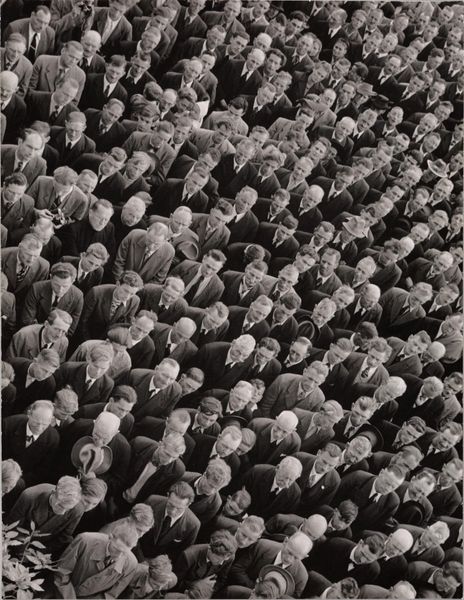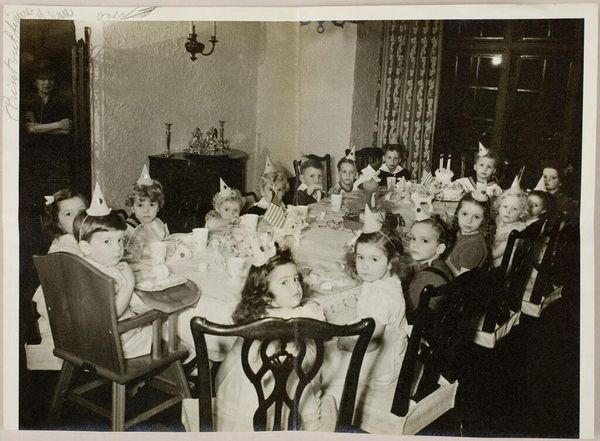
Audience watching play in recreation hall, Tulare Migrant Camp, Visalia, California 1940
0:00
0:00
photography, gelatin-silver-print
#
portrait
#
black and white photography
#
social-realism
#
street-photography
#
photography
#
group-portraits
#
gelatin-silver-print
#
ashcan-school
#
genre-painting
#
realism
Dimensions: image: 18.3 × 24.5 cm (7 3/16 × 9 5/8 in.) sheet: 20.6 × 25.4 cm (8 1/8 × 10 in.)
Copyright: National Gallery of Art: CC0 1.0
Editor: We're looking at a photograph by Arthur Rothstein called "Audience watching play in recreation hall, Tulare Migrant Camp, Visalia, California," taken in 1940. It’s a gelatin silver print, a sea of faces. The sheer density of people packed into this room is striking, almost overwhelming. There's a seriousness in their eyes. What captures your attention most when you look at this piece? Curator: It’s like peering through a keyhole into another world, isn't it? For me, it's the collective gaze that hits you first. Those hundreds of eyes, all fixed on something beyond the frame – the play, yes, but also the hope of shared experience, of forgetting for a little while. This image isn’t just about a group of people watching a play. It whispers stories of the Dust Bowl, of migration, of resilience during hardship. Editor: Resilience is a great word for it. There's something incredibly dignified in their expressions, despite what must have been immensely challenging circumstances. Curator: Exactly. Rothstein wasn't just documenting poverty; he was capturing the spirit of these people. See how the composition draws you in? The faces become almost like a landscape themselves, with their peaks and valleys of emotion. Do you notice how he’s playing with light and shadow? Editor: I do. The stark contrast almost amplifies the emotions. Curator: Indeed, it lends an almost theatrical feel, fitting given the subject matter. It is a beautiful paradox to show poverty through such a composed lens. Editor: It's fascinating how one image can tell so many stories. I hadn't really considered how Rothstein was making artistic choices, even within a documentary context. Curator: That's the magic, isn't it? Seeing the world not just as it *is,* but as it *could* be, even in the toughest of times. Every picture can tell a story about one family and thousands all at the same time, don't you think? Editor: Definitely. It really changes how I view documentary photography from this point on.
Comments
No comments
Be the first to comment and join the conversation on the ultimate creative platform.
